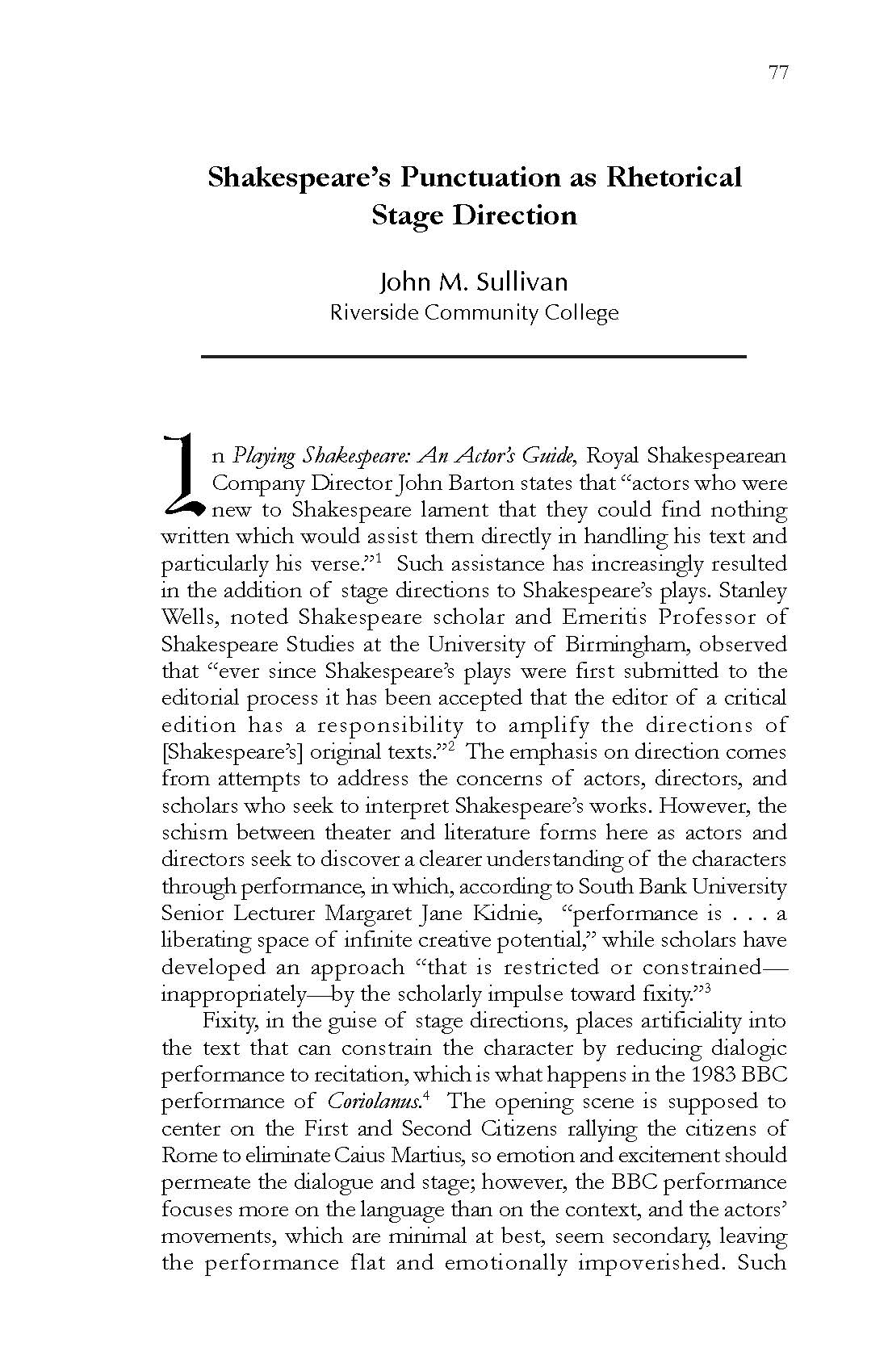Shakespeare’s Punctuation as Rhetorical Stage Direction
Main Article Content
Abstract
In Playing Shakespeare: An Actor’s Guide, Royal Shakespearean Company Director John Barton states that “actors who were new to Shakespeare lament that they could find nothing written which would assist them directly in handling his text and particularly his verse.”1 Such assistance has increasingly resulted in the addition of stage directions to Shakespeare’s plays. Stanley Wells, noted Shakespeare scholar and Emeritis Professor of Shakespeare Studies at the University of Birmingham, observed that “ever since Shakespeare’s plays were first submitted to the editorial process it has been accepted that the editor of a critical edition has a responsibility to amplify the directions of [Shakespeare’s] original texts.”2 The emphasis on direction comes from attempts to address the concerns of actors, directors, and scholars who seek to interpret Shakespeare’s works. However, the schism between theater and literature forms here as actors and directors seek to discover a clearer understanding of the characters through performance, in which, according to South Bank University Senior Lecturer Margaret Jane Kidnie, “performance is . . . a liberating space of infinite creative potential,” while scholars have developed an approach “that is restricted or constrained— inappropriately—by the scholarly impulse toward fixity.”3
